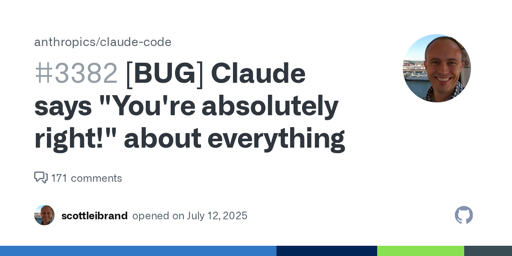Big tech pays large amounts of money. This is why people choose to work there.
- 3 Posts
- 637 Comments
I have figured it out: many of them.
Great! I salute your rigour in the matter. How many of them was it?
And no, Amnesty did not produce a significant amount of primary evidence. You’re just straight up lying now.
There are 430 hits for “Amnesty International interview” as sources.
Who knows, maybe they just interviewed Adrian Zenz for all of those claims. The joke would very much be on me in that case
Feel free to figure that part out. At a cursory glance, a not-insignificant part was information sourced directly by Amnesty.
Is Amnesty International a fundamentalist right wing organization, captured by Adrian Zenz?
They do cite him five times in their report on the subject, but their report does contain a total of 718 sources.
This is not to say that their report should be treated as uncritically correct, but neither should their claims be dismissed outright because of an anticommunist having been a part of doing research on the subject.
To illustrate - Candace Owens, a well known right-wing agitator and all-round piece of shit frequently speaks out against Israel. This does not, very obviously not, make Israel good.
Water, closely followed by coffee. I adhere to a two cup limit, but by god do I enjoy those two cups.

 4·3 days ago
4·3 days agoAssuming that no merger is not an option, I guess?

 17·5 days ago
17·5 days agoIn all honesty, that food truck seems a bit misplaced.

 5·7 days ago
5·7 days agoInterestingly enough, Norway was already doing quite alright before they discovered the oil - they were at 10th place amongst all European countries. The oil has given them additional wealth, but it has become somewhat of a national myth that the oil is the sole reason for Norway’s success, leading to their current reluctance to spin the industry down, despite it running fully counter to Norway’s self-image of a green nation.

 2·10 days ago
2·10 days agoNeverKnowsBest made a video about it, which I think is worth a watch: https://www.youtube.com/watch?v=dWuokRjedOA
He also pins the blame squarely on Paradox.

 52·11 days ago
52·11 days agoSpeak for yourself, taking a train is way faster than driving for most mid-distance trips I ever take, and the money I save by not owning a car is absolutely massive.
Slay the Spire is excellent on mobile.

 81·24 days ago
81·24 days agoDishwashers are superior to handwashing in basically every regard, and as such I lean towards it for everything in my kitchen that can handle it.

 3·26 days ago
3·26 days agodark pattern
This is not what dark pattern means.
Also, I don’t think enabling developer options is required to install arbitrary APKs.
I swear it’s literally always cloudy here when there’s northern lights. Terrible
This is basically the same as saying that you should not get a job because one day you might win the lottery.
The actual payoff is that it makes you feel better and keeps you feeling better for longer.
I see! I didn’t know that






Non-engineering positions